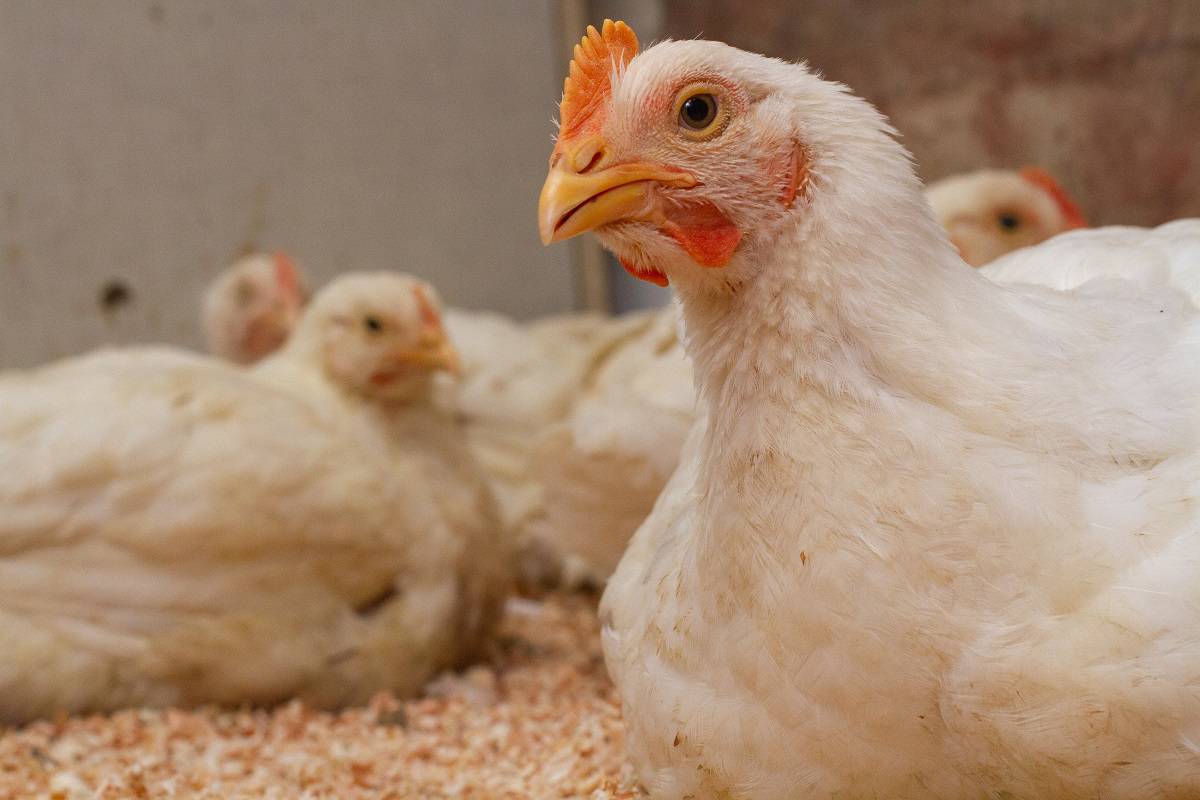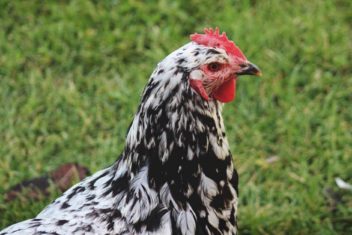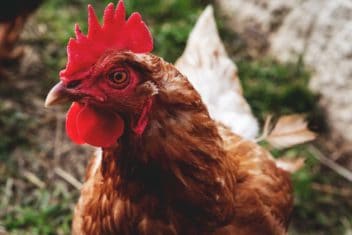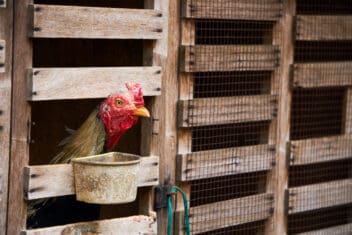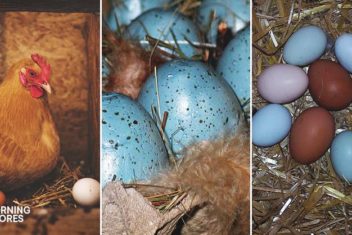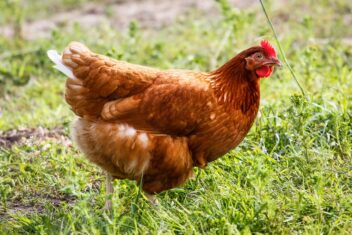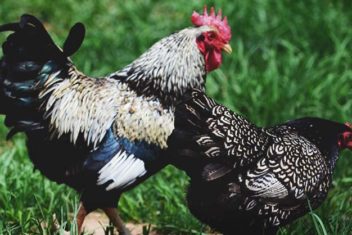I will never forget our first year raising Cornish Cross chickens as broilers, when I walked down to the brooder to find nearly a dozen of our 100 little white chickens stone-cold dead.
My heart nearly stopped, too!
We had raised chickens for many years and never had these kinds of losses. Yes, baby chicks do often die when they’re in the brooder, sometimes for reasons outside of your control. But a dozen?
If you are thinking about raising Cornish Cross chickens for meat, there are lots of mistakes you can make. From not providing enough food or water to keeping the birds in too-hot conditions, knowing what these broiler chicken needs are ahead of time, can help you be more vigilant when it comes to preventing mistakes.
Here are some of the biggest mistakes you can make raising these broilers. They are a unique cross with very specific needs and understanding theses needs will help you avoid mistakes and huge losses.
What Are Cornish Cross Chickens?
If you’re thinking about raising broiler chickens, the thought of raising a Cornish Cross has almost definitely crossed your mind. These birds, sometimes referred to as Cornish X, Cornish Rock, or Jumbo Cornish X Rock, are the most exceptional meat-producing birds around.
They are hybrids developed by crossing White Rock chickens with Cornish chickens. They produce chicks with broad breasts, large, meaty thighs, and yellow skin – the type of chicken you’re probably used to seeing at the supermarket.
The beauty of raising Cornish Cross chickens is that they grow much faster than chickens of other meat breeds. They can reach 3-4lbs in just under 8 weeks, in most cases, meaning you’ll spend less time and money on feed while raising them.
Because they are hybrids, they’re not meant to be bred. You won’t get the same types of birds in the next generation. Plus, since they get so large so quickly, they likely won’t survive to get to sexual maturity.
7 Common Broiler Chicken Needs, and Mistakes You Can Make
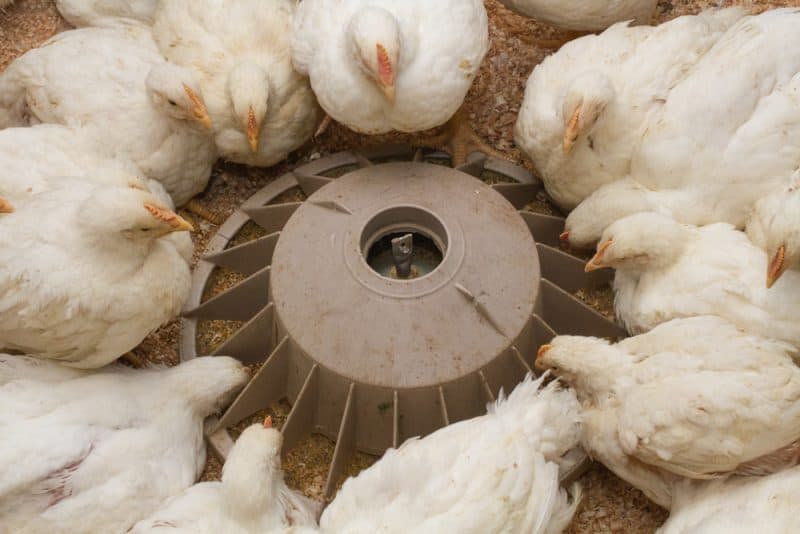
Because these quick growing meat chickens are tiny freaks of nature, they are quite finicky. Here are some of the most common broiler chicken needs, and mistakes people make when raising Cornish Cross chickens as broiler chickens.
1. Feeding Too Much
Cornish Cross chickens are known for having problems with congestive heart failure. They grow so quickly that their muscles outgrow their organs, causing them to die young.
Fortunately, you can avoid this by dialing in your feeding regiment. It is very easy to overfeed Cornish Cross chickens and this can cause leg issues, heart attacks, and of course, death. Don’t let them eat and eat and eat to their heart’s content.
On average, a Cornish Cross will take about 10-15lbs of feed over the course of 8-10 weeks. You may have to measure out the feed rather than allowing the chickens to eat constantly. This is one situation in which automatic feeders may not make the most sense (although I will always advocate for free-choice watering systems).
2. Feeding Too Little
That said, you can also feed your Cornish Crosses too little. There is a very fine line between feeding too much and feeding too little – again, make sure you measure out the feed so you can really dial it in.
3. Keeping Them Too Long
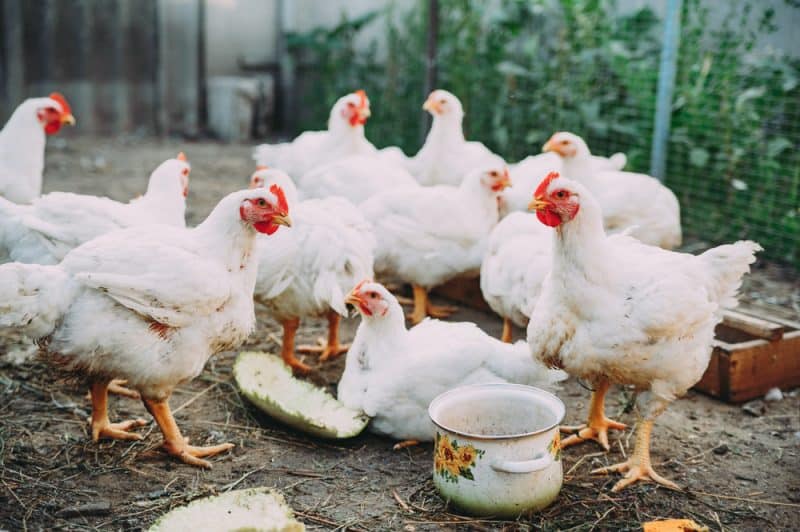
A very common mistake that people (especially beginners) make when keeping broiler chickens is keeping them for far too long.
These birds are freaks of nature. They are ready to be butchered in just 8-10 weeks. It seems impossible that they could go from tiny, fluffy little chicks to full-sized, 6lbs roasters in that short span of time – but it’s true.
In fact, in the past, we’ve butchered them as early as 6-7 weeks!
If you’re new to butchering chickens and aren’t sure how long it’s going to take you (or even if you’ll be able to do it yourself), plan ahead. Give yourself time to gather all the equipment you need so that you don’t find yourself keeping chickens any longer than 10 weeks – and remember that sometimes, even 10 weeks might be too long.
Why is it such a mistake to keep them too long? It’s not just that the meat will become tough. Keep your Cornish Cross chickens for too long and they’ll actually die on their own. You can experience some pretty sobering losses if you aren’t careful about processing your chickens in time. These birds aren’t meant to live long – it’s a sad truth but one that you need to be aware of if you decide to raise them.
They are meant to grow quickly, grow huge, and be killed off by the time they’re less than 3 months old. If you keep them around too long, their poor little hearts and legs will give out on them. Don’t subject them to such a fate! Be responsible and plan.
4. Overcrowding
Cornish Cross chickens are deceptive. When you first bring them home and put them in the brooder, you might be tempted to keep them in a smaller space. Those tiny little chicks can’t possibly need that much space, right?
Wrong. You’ll be shocked at how quickly they grow.
In just a span of 2-3 weeks, they’ll outgrow the brooder and need to be put outside. Since these birds are clumsy and slow-moving, you need to make sure they have adequate protection from predators. They are sitting ducks.
Don’t be tempted to shove them all into the coop, though. The average chicken needs at least 2-square-feet of space but I would recommend doubling that if possible. This can cut down on aggressive behaviors, competition, and fighting.
5. Assuming They Don’t Need Exercise
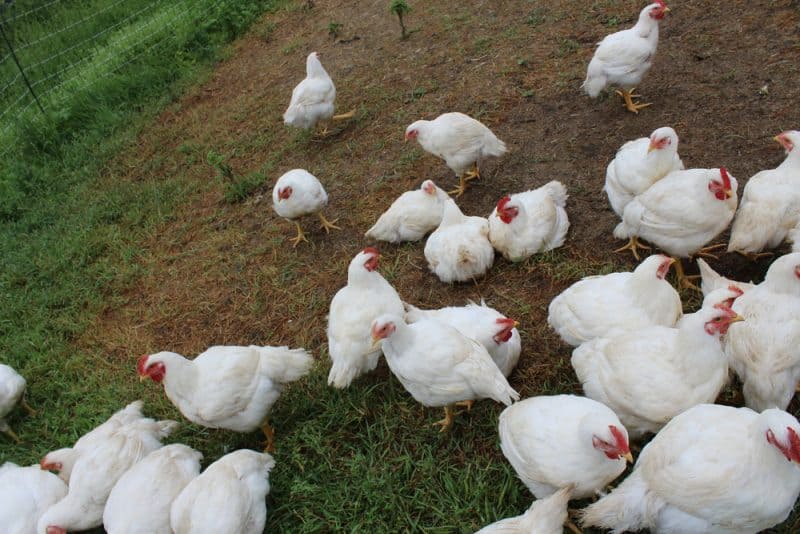
So you’ve been diligent about providing your broilers with plenty of space – they can just park it and stay there, right?
There’s a common misconception that broiler chickens should not be allowed to exercise since their little hearts can’t keep up with their rapidly growing bodies.
These birds are indeed more prone to health problems related to stress since they are so large and fast-growing. However, a bit of exercise will do them some good.
Some people argue that these birds don’t pasture well. They will park it by the feeders and not eat grass or bugs. Personally, I have not found that to be the case. While these birds aren’t the most motivated when it comes to finding forage, they will eat plenty of grass and other food they find naturally.
The proof? We’ve found undigested grass and other foods in their crops at butchering time – gross, I know!
We raise our chickens in chicken tractors so that they are moved to fresh pasture every day. Whether it seems as though they are eating grass or not, moving these birds regularly will provide them with fresh grass (less manure load for zero cleaning) and a bit of exercise. You can also put feeders and waterers at various spots so that they’re forced to move so they can eat.
6. Not Enough Water
Cornish Cross chickens eat far more than any other breed of chickens – therefore, they also need more water. One of the biggest mistakes we made while raising our first batch of chicks was not providing enough water. We had losses by the truckload in the first few days because of this.
For 100 birds, you need at least 6-gallons of water per day. Divide this among several waterers with at least an inch of water space per bird. These are thirsty creatures and you don’t want to let them run out of water, ever. You’ll likely need far more than 6-gallons during exceptionally hot periods, too.
7. Too Much Heat
Many people raise their broiler chickens in the winter or the spring or fall months only. In some climates, summer weather can be too hot for meat chickens, who prefer temperatures of no warmer than 75-80°.
Cornish Cross chickens have amped up metabolisms, so the heat is doubly intense for them. That said, they have sparse feathering, so too much cold is problematic, too.
We raise our Cornish Cross chickens in the summer, but we also live in a cold climate. Take your own weather into consideration when deciding when to raise your birds but remember that hot temperatures can kill a flock of chickens just as easily as a predator can, particularly sudden jumps in temperature (versus seasonal or gradual increases).
How to Meet Broiler Chicken Needs – Correctly and Successfully!

It can be extremely difficult to raise Cornish Cross chickens – in fact, many producers report a near 30% mortality rate.
That’s 3 out of every 10 chicks. Probably not something you want to see in your own flock!
However, by being aware of the common missteps above, you can reduce that rate to a much more acceptable rate of around 5%. Ultimately, it is pretty much impossible to prevent all deaths. These birds often die early without any warning signs of injury or illness.
Consider the tips above when raising your birds and you’ll be eating tasty roasters in just a few short weeks!
